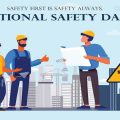
The construction industry, with all its promise and progress, remains one of the most perilous sectors worldwide, accounting for a staggering number of occupational injuries and fatalities. Shockingly, the International Labour Organisation reports that over 60,000 workers lose their lives each year due to accidents on construction sites, leaving millions more grappling with work-related illnesses and disabilities. These alarming statistics are a grave reminder that most of these tragedies are preventable.
As we strive to make construction sites safer, let’s discuss some of the more effective strategies you can employ to safeguard the construction workforce.
How to Guarantee Safety on Your Construction Project
If you run a construction firm, your enterprise carries a moral and legal responsibility to protect its workers from harm and create a safe and healthy work environment. This commitment goes beyond human rights and social responsibility; it’s a strategic business decision.
A secure and productive workforce elevates the quality, efficiency, and profitability of construction projects and reduces the costs and risks of accidents, injuries, and legal disputes. With that in mind, let’s take an in-depth look at a few strategies that can help achieve this goal.
-
Conduct Regular Risk Assessments and Safety Audits:
Prior to commencing any construction project, it is crucial you identify and assess potential hazards and risks that may arise during the work process. This encompasses an in-depth evaluation of site conditions, materials and equipment used, tasks performed, weather and environmental factors, as well as the competence and behaviour of the workers.
Based on this comprehensive analysis, you must develop a robust safety plan and outline preventive and corrective measures to minimise risks. The safety plan should undergo regular reviews and updates and be audited by qualified professionals to ensure its effectiveness and adherence to relevant standards and regulations.
- Provide Adequate Training and Education:
A leading cause of accidents on construction sites is Human error. This often stems from insufficient knowledge, skill, or experience or may arise from negligence or recklessness. To combat this, it is advised you provide extensive training and education on the project’s nature to all workers involved in your construction, from managers and supervisors to contractors, subcontractors, and employees.
This training should encompass several critical topics, such as site safety rules and procedures, hazard identification and control, proper use of personal protective equipment (PPE) and emergency response kits, fire prevention and protection, electrical safety, and working at heights, confined spaces, scaffolding, excavation, and demolition.
Each training program must be tailored to suit the unique needs and characteristics of the project and the worker group. Furthermore, you should hire qualified instructors to deliver the training using appropriate methods and materials. You can also organise periodic refresher courses, feedback sessions, and performance evaluations throughout the course of your construction work to reinforce the training.
-
Provide Suitable Equipment and Materials
Among the leading causes of construction site accidents is faulty or inadequate equipment and materials. Defective tools, machinery, vehicles, or scaffolding can trigger malfunctions, breakdowns, or failures, jeopardising workers and undermining project integrity.
To effectively mitigate these risks, it is imperative to prioritise providing appropriate and well-maintained equipment and materials adhering to specified standards. Furthermore, strictly ensuring that only trained and authorised personnel operate this equipment is essential.
The Role of CSCS Cards in Enhancing Site Safety
CSCS cards are pivotal in bolstering site safety and validating worker competence. Recognised as a distinguished certification program in the UK, the Construction Skills Certification Scheme (CSCS) offers a standardised approach to verifying construction workers’ skills, qualifications, and training, thereby empowering employers to assess workforce competency.
Distinguished by different colours representing varying levels of skill and experience, CSCS cards present a crucial aspect in ensuring construction workers possess the requisite training and proficiency to execute their duties safely and efficiently. This would significantly reduce the risk of accidents and injuries on construction sites.
Furthermore, because CSCS cards require periodic renewal, it incentivises workers to continually develop and train themselves professionally. This proactive approach ensures that all workers remain current with the latest safety practices and regulations, fostering a safer work environment for everyone involved.
While the value of CSCS cards is undeniable, average workers may face concerns about their costs. A simple online query inquiring how much is a CSCS card return figures reaching as high as £50. Recognising this, employers can alleviate their worries by funding training and certification, cementing their commitment to worker safety and professional growth.
Conclusion
Safeguarding the construction workforce demands unwavering dedication and vigilance. By embracing effective strategies such as regular risk assessments, comprehensive training, providing adequate equipment, and mandating CSCS cards, you can protect your workforce from preventable harm, cultivating a culture of safety that benefits all concerned.









